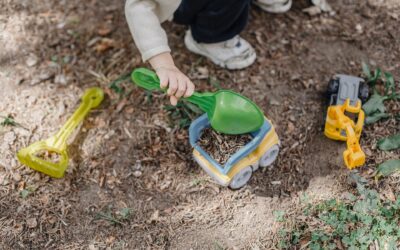No. 90: Using energy-efficient air purifiers for classrooms
No. 90: Using energy-efficient air purifiers for classrooms
Number 90
Energy-efficient air purifiers in schools can improve indoor air quality while reducing energy costs and greenhouse gas emissions. HEPA filters and smart sensors can provide effective air purification while minimizing energy consumption.
Energy-efficient air purifiers are a smart investment for schools, providing both environmental and financial benefits. By improving indoor air quality, air purifiers can reduce absenteeism, improve student performance, and even extend the lifespan of HVAC systems. Energy-efficient models use less electricity, reducing utility costs and greenhouse gas emissions. Additionally, grants and rebates may be available to help schools offset the initial cost of purchasing and installing air purifiers. With mounting concerns about indoor air quality in the wake of the COVID-19 pandemic, investing in energy-efficient air purifiers is more important than ever.
Indoor air quality has a direct impact on student health and performance. Poor air quality can lead to respiratory issues, headaches, and fatigue, among other symptoms. Studies have shown that improved indoor air quality can lead to reduced absenteeism and improved academic performance. One study by Harvard researchers found that students in classrooms with improved air quality scored 61 percent higher on cognitive tests than those in classrooms with poor air quality. By investing in energy-efficient air purifiers, schools can improve the indoor air quality of their classrooms, leading to better student health and academic outcomes.
In addition to improving indoor air quality, energy-efficient air purifiers can also help schools reduce their environmental footprint. Traditional air purifiers can consume a significant amount of electricity, leading to higher utility costs and increased greenhouse gas emissions. By opting for energy-efficient models, schools can reduce their electricity consumption, leading to lower utility bills and a smaller carbon footprint. For example, ENERGY STAR-certified air purifiers use up to 40 percent less energy than standard models, without sacrificing performance.
There are also financial incentives available to help schools offset the initial cost of purchasing and installing energy-efficient air purifiers. Some utility companies offer rebates or discounts for energy-efficient appliances, including air purifiers. Additionally, grants may be available from government or nonprofit organizations to help schools finance energy-efficient upgrades. For example, the Department of Energy’s Energy Efficiency and Conservation Block Grant program provides funding to support energy efficiency and renewable energy projects in eligible communities, including schools.
Investing in energy-efficient air purifiers is especially important in the wake of the COVID-19 pandemic. The virus is primarily spread through respiratory droplets, which can linger in the air for hours. Poor ventilation and indoor air quality can increase the risk of transmission in enclosed spaces, such as classrooms. By improving indoor air quality with energy-efficient air purifiers, schools can help reduce the risk of COVID-19 transmission, as well as other respiratory illnesses.
In conclusion, investing in energy-efficient air purifiers is a wise decision for schools, offering both environmental and financial benefits. Improved indoor air quality can lead to better student health and academic outcomes, while energy-efficient models can help schools reduce their electricity consumption and lower utility bills. With financial incentives available and mounting concerns about indoor air quality in the wake of the COVID-19 pandemic, there has never been a better time for schools to invest in energy-efficient air purifiers.
Sources:
-
“School IAQ Management: A Guide for Building Owners and Facility Managers.” United States Environmental Protection Agency, Office of Air and Radiation. (https://www.epa.gov/sites/default/files/2018-08/documents/school_iaq_management.pdf)
-
“Indoor Air Quality in Schools.” Environmental Protection Agency. (https://www.epa.gov/iaq-schools)
-
“Green Cleaning, Sanitizing, and Disinfecting: A Curriculum for Schools.” New York State Department of Environmental Conservation. (https://www.dec.ny.gov/docs/materials_minerals_pdf/greencleaningmanual.pdf)
-
“The Potential of Portable Air Cleaners and Masks for Protection against Indoor Air Pollution in India: A Systematic Review and Meta-analysis.” M.R. Shankar, N.D. Neupane, S. Cheema, et al. The Lancet Planetary Health, vol. 4, no. 10, 2020, pp. e452-e461. (https://www.thelancet.com/journals/lanplh/article/PIIS2542-5196(20)30182-2/fulltext)
-
“School-Based Air Cleaning and Filtration: State of the Art and Future Directions.” K. Saito, R. Layton, R. Sippola, et al. Journal of the Air & Waste Management Association, vol. 71, no. 10, 2021, pp. 1051-1072. (https://www.tandfonline.com/doi/full/10.1080/10962247.2021.1936544)
-
“Portable Air Cleaners and Health: An Evidence Review.” California Air Resources Board. (https://ww3.arb.ca.gov/research/single-project.php?row_id=70809)
-
“Clean Air in Every School: A Comprehensive Guide for Improving Indoor Air Quality in Schools.” American Lung Association. (https://www.lung.org/our-initiatives/healthy-air/indoor/indoor-air-pollutants/clean-air-in-every-school)
-
“Portable Air Cleaners: An Effective Strategy for Reducing Indoor Air Pollution in Highly Polluted Settings.” D. Mishra, S. Chakrabarti, S. Dhingra, et al. Indoor Air, vol. 28, no. 5, 2018, pp. 748-760. (https://onlinelibrary.wiley.com/doi/abs/10.1111/ina.12484)

All 100 ideas in one, easy to share ebook. Download now and start helping your school be its best version of itself...
Downloaded over 17,000 times!

More ways to make a difference, now!
No. 26: Install bike racks at school
Number 26 Installing bike racks in schools can benefit the environment, promote physical activity, and save money. Students who bike to school have improved physical fitness and academic performance, while schools can save money on transportation costs and reduce...
No. 18: Use digital signage instead of paper posters
Number 18 Using energy-efficient digital signage instead of paper posters in schools has environmental and financial benefits. It reduces waste and saves energy, resulting in cost savings. Experts suggest that digital signage is also more effective in communicating...
No. 4: Create sustainable play areas
Number 4 This article discusses the environmental and financial benefits of creating sustainable play areas in schools. These play areas reduce waste, promote a connection to nature, reduce carbon emissions, and save schools money on maintenance and utility bills....





